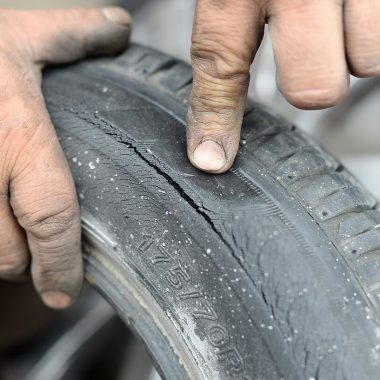Table of Contents
Introduction
HVLP (High Volume, Low Pressure) spray guns have become popular among DIY enthusiasts and professionals for their efficiency and precision in applying paint and coatings. One common question is whether it is possible to use an HVLP spray gun with a regular air compressor. Our article will take an in-depth look at the HVLP spray guns’ compatibility with conventional compressors, providing a comprehensive understanding of the factors influencing this setup.
Understanding HVLP Spray Guns
What is an HVLP Spray Gun?
HVLP spray guns represent a genre of paint application devices that employ reduced air pressure when contrasted with conventional spray guns. They are designed to deliver a high volume of paint at low pressure, resulting in reduced overspray and better transfer efficiency.
Advantages of HVLP Spray Guns
HVLP spray guns offer several advantages, such as improved transfer efficiency, reduced overspray, and a smoother finish. Additionally, they are more environmentally friendly as they minimize the release of harmful chemicals into the air.
Components of an HVLP Spray Gun
An HVLP spray gun typically consists of a gun body, nozzle, air cap, fluid tip, and trigger. These components work together to atomize the paint and regulate the flow of air and paint for a controlled application.
The Role of Air Compressors
What is a Regular Compressor?
A regular compressor is a standard tool for generating compressed air for various applications, such as powering pneumatic tools and spray guns. However, not all compressors are suitable for use with HVLP spray guns.
HVLP Spray Guns and Air Compressors
HVLP spray guns require a specific air pressure and volume level to function optimally. The key challenge lies in ensuring that a regular compressor can meet the requirements of an HVLP spray gun without compromising performance.
HVLP Spray Gun and Regular Compressor Compatibility
Air Volume (CFM) Requirements
One of the critical factors to consider is the air volume or cubic feet per minute (CFM) needed to operate the HVLP spray gun effectively. HVLP spray guns typically require higher CFM compared to conventional spray guns.
PSI (Pounds per Square Inch) Specifications
Alongside air volume, the PSI rating is equally essential, visit this website for more information. HVLP spray guns generally operate at a lower PSI, and matching the compressor’s output with the gun’s requirements is essential.
Air Hose Size and Fittings
The right air hose size and fittings are crucial for maintaining proper airflow. An inadequate hose diameter or incompatible fittings can lead to a drop in pressure and affect the performance of the HVLP spray gun.
Making Your Regular Compressor Compatible with HVLP Spray Guns
Using a Regulator and Moisture Trap
You can incorporate an air pressure regulator and moisture trap to adapt a regular compressor for HVLP spray gun use. The regulator helps control the air pressure, while the moisture trap prevents water vapor from contaminating the paint.
Upgrading your Compressor
In some cases, upgrading to a compressor with higher CFM and adjustable pressure settings may be necessary. This ensures a steady, consistent air supply for optimal HVLP spray gun performance.
Pros and Cons of Using HVLP Spray Guns with Regular Compressors
Advantages
- Cost-effectiveness: Utilizing an existing regular compressor can save money compared to purchasing a dedicated HVLP turbine system.
- Versatility: Using the same compressor for different pneumatic tools and HVLP spray guns adds versatility to your workspace.
Limitations
- Air Supply Requirements: Regular compressors might struggle to meet the demanding air supply needs of HVLP spray guns, leading to subpar results.
- Upgrades and Adjustments: Achieving compatibility might require investing in additional equipment or upgrading the compressor.
Safety Precautions and Best Practices
Proper Ventilation
When using HVLP spray guns, ensure proper ventilation in your workspace to dissipate paint fumes and maintain a safe environment.
Using Safety Gear
Wear appropriate safety gear, including goggles, respirators, and protective clothing, to protect yourself from paint overspray and fumes.
Cleaning and Maintenance
Regularly clean and maintain your HVLP spray gun and compressor to ensure longevity and optimal performance.
Conclusion
In conclusion, using an HVLP spray gun with a regular compressor is possible, but it requires careful consideration of the compressor’s specifications and the spray gun’s requirements. Upgrading the compressor or using additional equipment can enhance compatibility and performance. Remember to prioritize safety and proper maintenance to achieve the best results.
FAQs
- Can I use any air compressor with an HVLP spray gun? While it is possible to use a regular compressor, ensure it meets the CFM and PSI requirements of your HVLP spray gun.
- Can I adjust the air pressure on a regular compressor to match the HVLP spray gun’s needs? Some regular compressors may have adjustable pressure settings, allowing you to fine-tune the air output.
- What happens if the air compressor does not provide enough CFM for the HVLP spray gun? Insufficient CFM can lead to poor atomization, inconsistent spray patterns, and unsatisfactory results.
- Can I use an HVLP spray gun with a regular compressor for automotive painting? Ensure your compressor can deliver the required CFM and PSI for automotive painting.
- What is the recommended maintenance frequency for HVLP spray guns and compressors? Regularly clean and maintain your equipment, following the manufacturer’s guidelines, for optimal performance and longevity.



